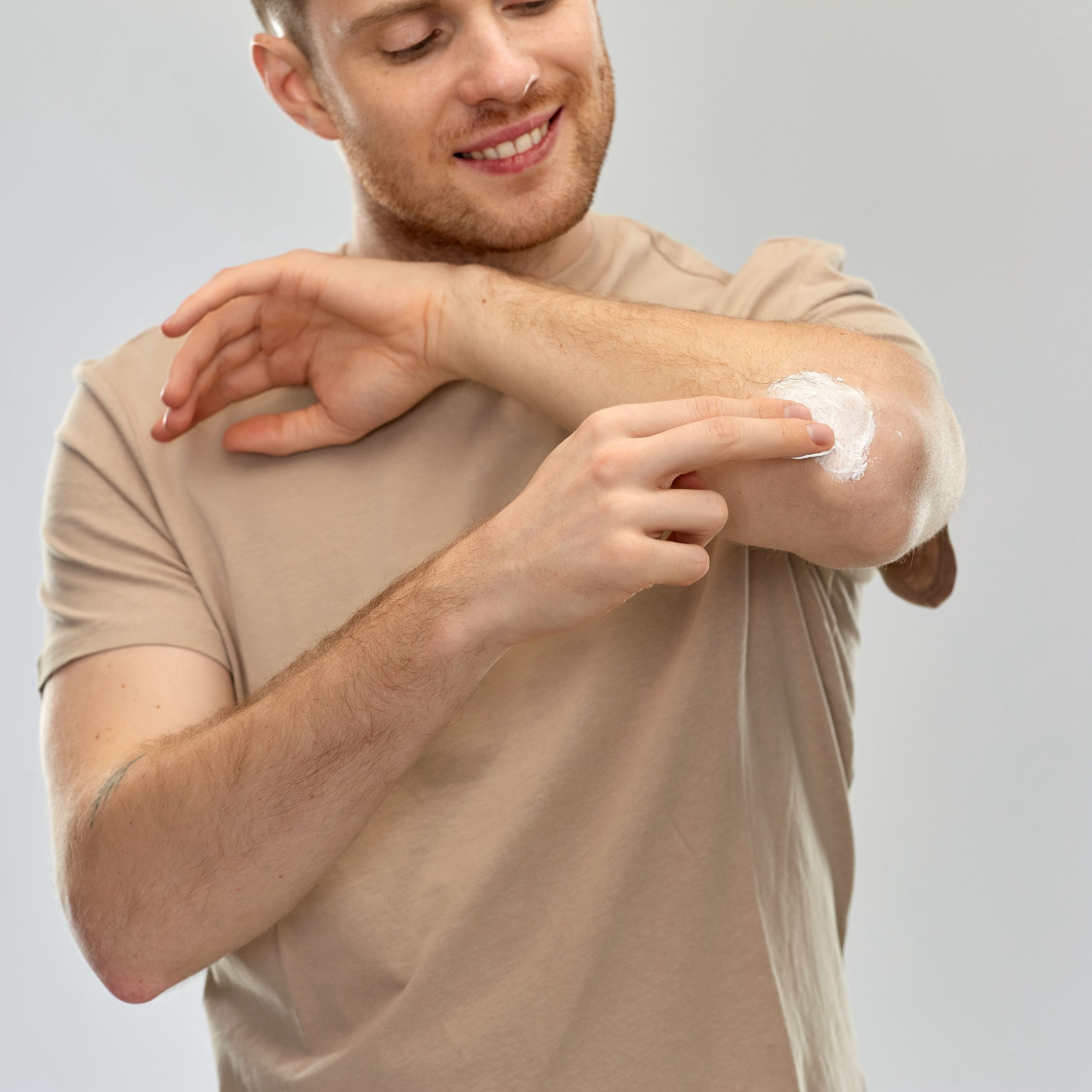Article
Study Compares Calcipotriol and Calcitriol in the Treatment of Chronic Plaque Psoriasis
Author(s):
Statistically significant reductions in erythema, scaling, thickness, and overall target plaque scores were observed in both treatment regimens.
Credit: Adobe Stock

Treatment of plaque psoriasis with vitamin D derivatives calcipotriol and calcitriol ointment, in combination with narrow-band ultraviolet B (NBUVB) phototherapy, proved to be a safe, effective, and well-tolerated option for patients.
According to the results, calcipotriol demonstrated several advantages over calcitriol in terms of efficacy, rapid onset of action, and maintenance of response. Patients treated with calcipotriol experienced earlier plaque clearance and a lower relapse rate. Additionally, the calcipotriol group required fewer treatment sessions and lower cumulative NBUVB doses, indicating a potential cost-saving benefit.
Chronic stable plaque psoriasis is common, characterized by raised, scaly plaques on the skin. Vitamin D analogs and NBUVB phototherapy are widely recognized therapeutic approaches for managing this condition.
Disha Chakraborty and Kamal Aggarwal, Pandit BD Sharma University of Health Sciences, Rohtak, Rohtak, India, conducted an open-label intraindividual, left-right study which aimed to compare the efficacy of the 2 different vitamin D analogs, calcipotriol, and calcitriol, in combination with NBUVB phototherapy in patients with chronic stable plaque psoriasis.
Vitamin D Analogs for Psoriasis
The study included a total of 30 patients with stable plaque psoriasis, with a gender distribution of 19 males and 11 females. The majority of patients (63.3%) belonged to the age group of 21-40 years.
The mean age of the patients was reported as 35.97 ± 10.7 years, indicating that the study primarily included adults within a specific age range. This age group is commonly affected by chronic plaque psoriasis, reflecting the typical demographic profile of patients seeking treatment for this condition.
In the 12-week treatment period, the target lesion on the left side of each patient's body was topically treated with calcitriol ointment, while the corresponding lesion on the right side was treated with calcipotriol ointment once daily.
Patients also received NBUVB phototherapy 3 times per week across the entire body. The efficacy of the treatments was assessed through target plaque scoring.
Comparing the Efficacy Profiles
Statistically significant reductions in erythema, scaling, thickness, and overall target plaque scores were observed in both treatment regimens. Patients exhibited improvements as early as 2 weeks into the treatment.
According to the data, the baseline target plaque score for both Group 1 and Group 2 ranged from 6 - 12, with a mean score of 8.17 ± 1.70.
The largest proportion of patients (40%) had a body surface area involvement of 11-20%. At the time of inclusion in the study, the duration of the disease ranged from 1 year to 20 years. On average, the patients had a disease duration of < 5 years.
However, the combination of calcipotriol and NBUVB phototherapy exhibited superior results in terms of plaque clearance and relapse rate compared to the calcitriol combination. The group treated with calcipotriol required a lower number of treatment sessions and cumulative NBUVB doses.
The results of this study provided valuable insights into the comparative efficacy of vitamin D analogs in combination with NBUVB phototherapy for the treatment of chronic stable plaque psoriasis, aiding dermatologists in making informed treatment decisions for their patients.
Investigators acknowledged that the limited sample size of the study as well as an open-label design which may introduce biases and limit the generalizability of the findings.
"Since psoriasis is a long-term, relapsing, remitting disease, newer and safer treatment options are always welcome, and our study provides a new therapeutic possibility with advantages that continue even after treatment has been stopped," investigators wrote. "In the future, we will need larger prospective studies with long-term follow-up in order to corroborate the results of our study."
References:
- Chakraborty D, Aggarwal K. Comparative evaluation of efficacy and safety of calcipotriol versus calcitriol ointment, both in combination with narrow‐band ultraviolet B phototherapy in the treatment of stable plaque psoriasis. Photoderm Photoimm Photomed. 2023.





